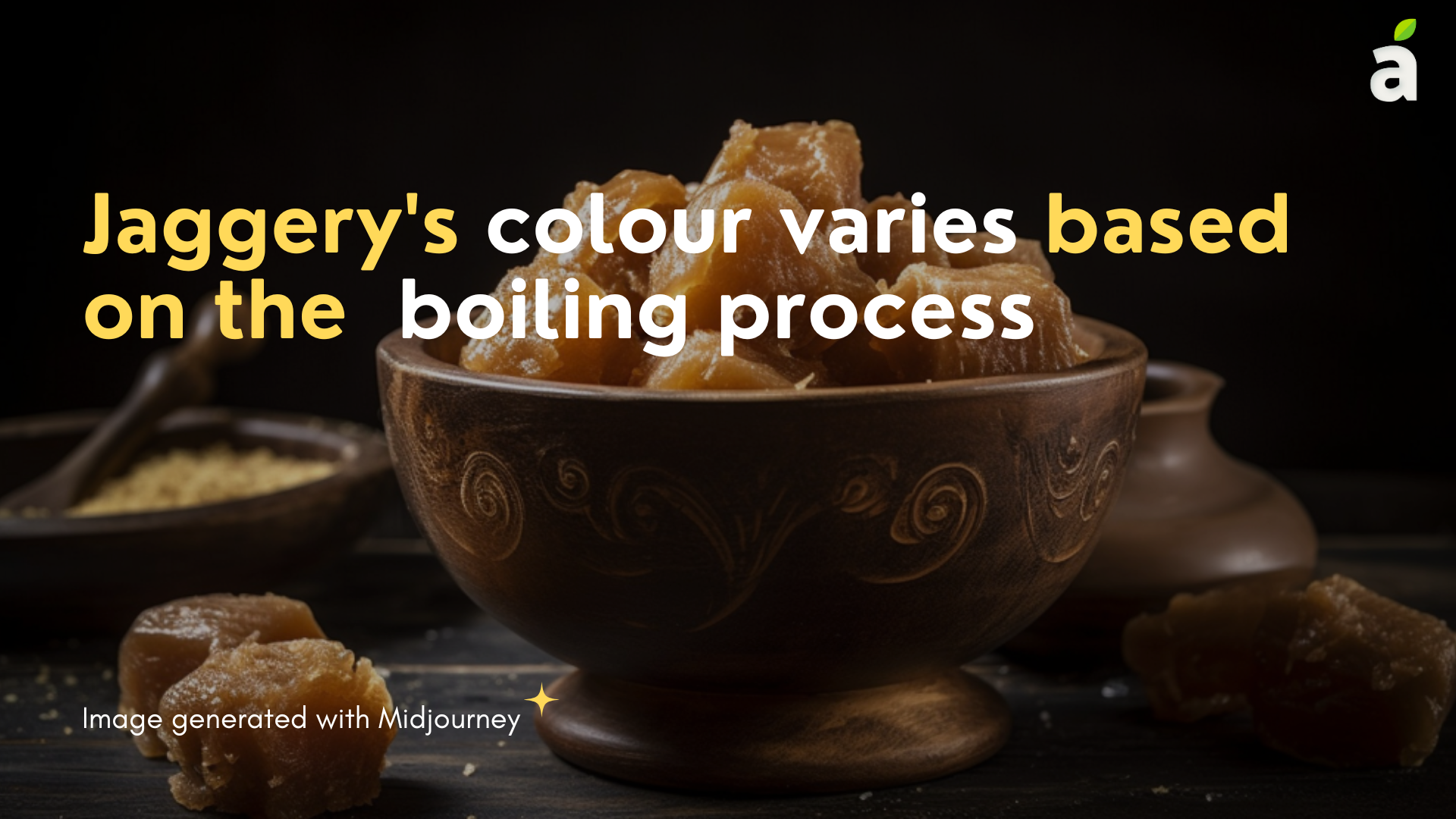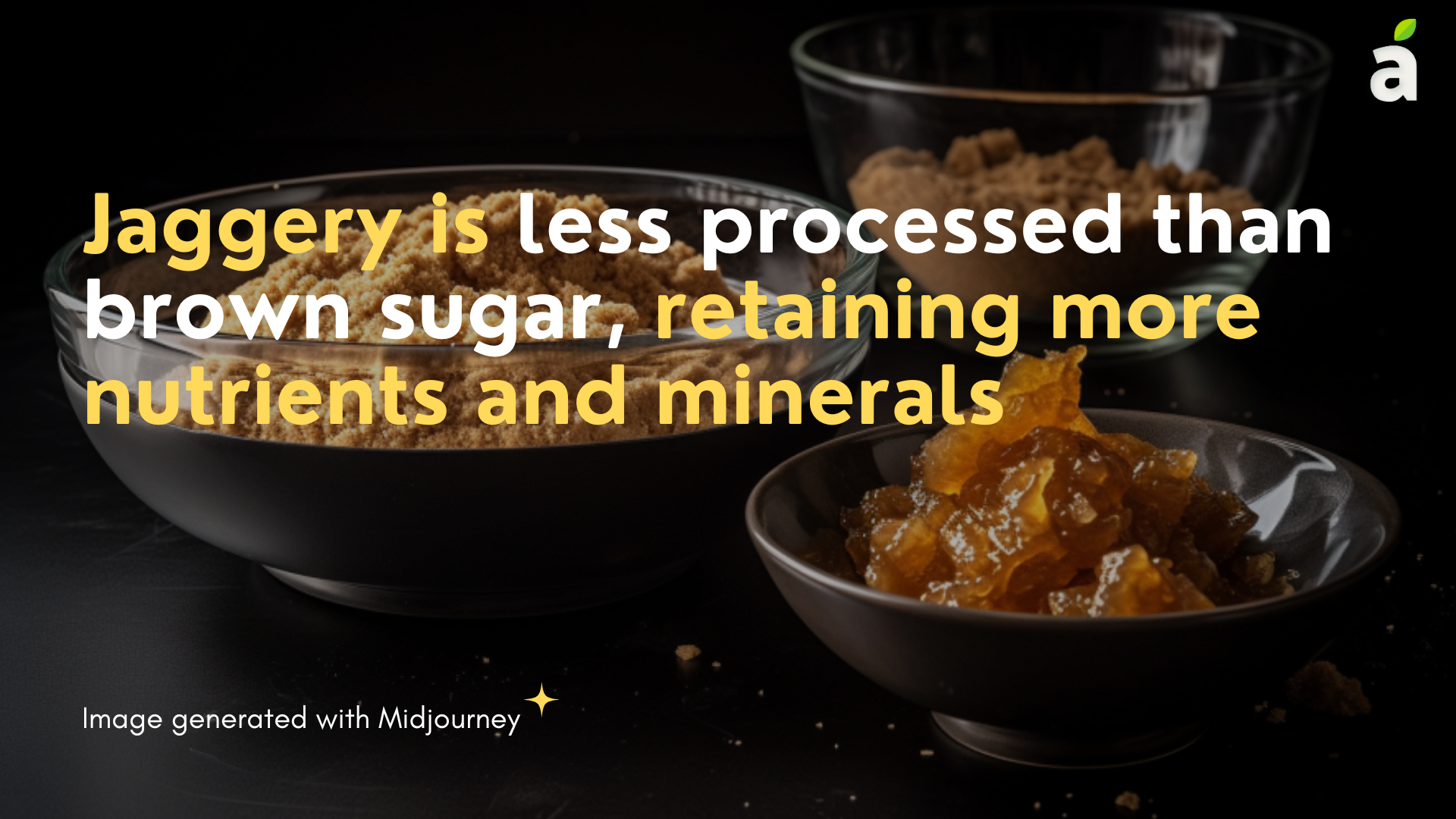Published Date January 24, 2003
The Sweet Treasure: Exploring the World of Jaggery
By Naurin Ansari
3 min read
Last update date: January 24, 2003
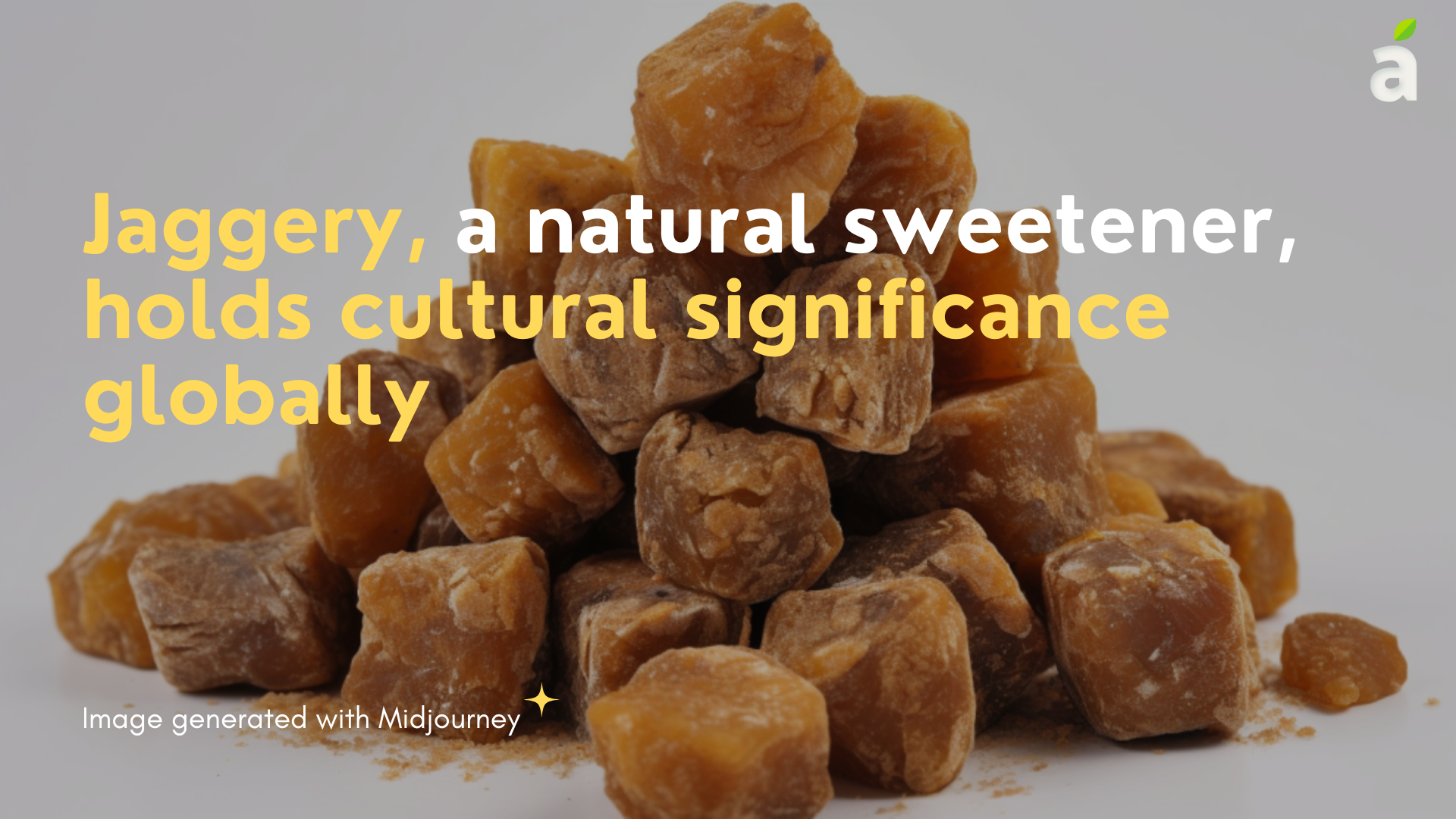
Jaggery, a natural sweetener widely used in various cuisines, holds a special place in many cultures. Derived from sugarcane or date palm sap, this unrefined sugar alternative offers a unique flavour and numerous health benefits
In this blog, we delve into the fascinating world of jaggery, exploring its origins, production process, beneficial properties, and how it differs from brown sugar.
What is Jaggery?
Jaggery, also known as "gur," is a traditional form of sugar made by boiling raw sugarcane juice or extracting sap from date palm trees. It is widely used as an alternative to white sugar in India. Jaggery has a golden yellow colour and a sweet taste similar to brown sugar. It is valued for its higher content of vitamins and minerals compared to white sugar, making it a better alternative in terms of nutritional value.
However, it is still a type of sugar and excessive intake can have adverse effects on health. Good quality jaggery contains around 70% sucrose, while white sugar has 99.7% sucrose. India is a significant producer of jaggery, with over 70% of the world's supply coming from the country. In India, jaggery is often referred to as "medicinal sugar" due to its perceived health benefits.[1]
How is Jaggery Made?
Jaggery, commonly derived from sugarcane, undergoes a series of steps to transform into its final form. The process begins with the extraction of sweet juice or sap from the sugarcane or date palm. This juice is then clarified and strained to remove any sediment or impurities.
Next, the clarified juice is boiled and stirred in large pans for several hours, resulting in a thick, yellow paste. The paste is then transferred into moulds or allowed to cool until it solidifies into the desired jaggery blocks. The colour of the jaggery can vary, ranging from light to dark brown, depending on the quality of the source material and the concentration achieved during the boiling process.
This traditional method ensures the production of jaggery with its distinct flavour and texture.[2]
What Good is Jaggery?
Jaggery is a minimally processed sweetener that offers various health benefits due to its natural composition. Here are some of its advantages:
- Nutrient Rich: Jaggery is a good source of essential minerals like iron, magnesium, and potassium, which support overall well-being.
- Digestive Support: Enzymes present in jaggery aid digestion and promote a healthy digestive system, which helps alleviate issues like constipation and bloating.
- Energy Boost: Natural sugars in jaggery provide a quick energy boost, making it ideal for athletes or those needing instant energy.
- Immune System Support: Jaggery's antioxidants and phytochemicals strengthen the immune system, protecting against infections.
- Respiratory Health: Jaggery's expectorant properties can help alleviate respiratory problems such as asthma and bronchitis.
Jaggery is a rich source of magnesium, with just 10g providing around 16mg of this mineral. However, it's important to ensure that the jaggery is 100% natural. It contains sucrose (around 65%-85%) and as a result diabetic patients should consume it in moderation and only after consulting their healthcare provider.[3]
Difference Between Brown Sugar and Jaggery
Although brown sugar and jaggery belong to the sugar category, they have distinct characteristics. Here are the main differences:
- Source: Brown sugar is obtained by adding molasses back into refined white sugar. Jaggery, however, is directly made from sugarcane juice or date palm sap without extensive refining.
- Processing: Brown sugar undergoes refining, while jaggery is minimally processed, preserving more natural nutrients and minerals.
- Flavour and Taste: Brown sugar has a milder flavour, while jaggery offers a unique caramel-like taste.
- Nutritional Content: Jaggery contains higher amounts of minerals like iron and potassium compared to brown sugar. Additionally, jaggery has a lower glycemic index, making it preferable for those concerned about blood sugar levels.
Jaggery is commonly used in Indian sweet dishes, candies, and desserts, while brown sugar is popular for baking. Its sweet and tangy taste makes brown sugar a favoured sweetener for cookies, muffins, cakes, pies, and pastries.[4]
Takeaway
With its rich history, unique production process, and wide-ranging benefits, Jaggery serves as a versatile and healthier alternative to refined sugar. Whether added to desserts, beverages, or savoury dishes, jaggery brings a distinct sweetness and nutritional value. Understanding the differences between jaggery and other sweeteners like brown sugar allows us to make informed choices for our well-being. So, why not embrace the natural sweetness of jaggery and unlock its goodness in your culinary adventures?
Keep reading
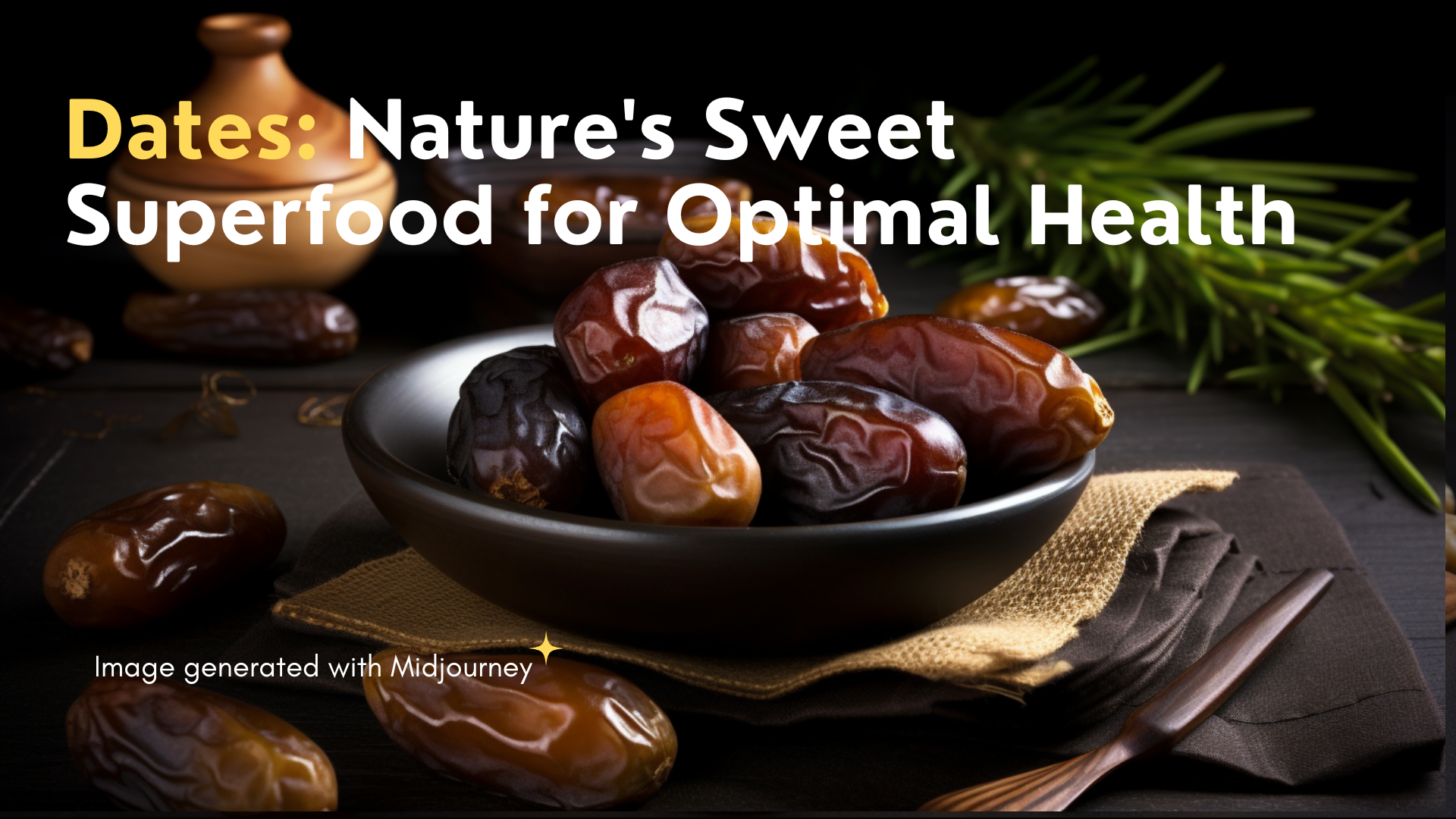
The Sweet and Nutritious World of Dates
By Naurin Ansari

Navigating the World of Caffeine
By Team Ariso
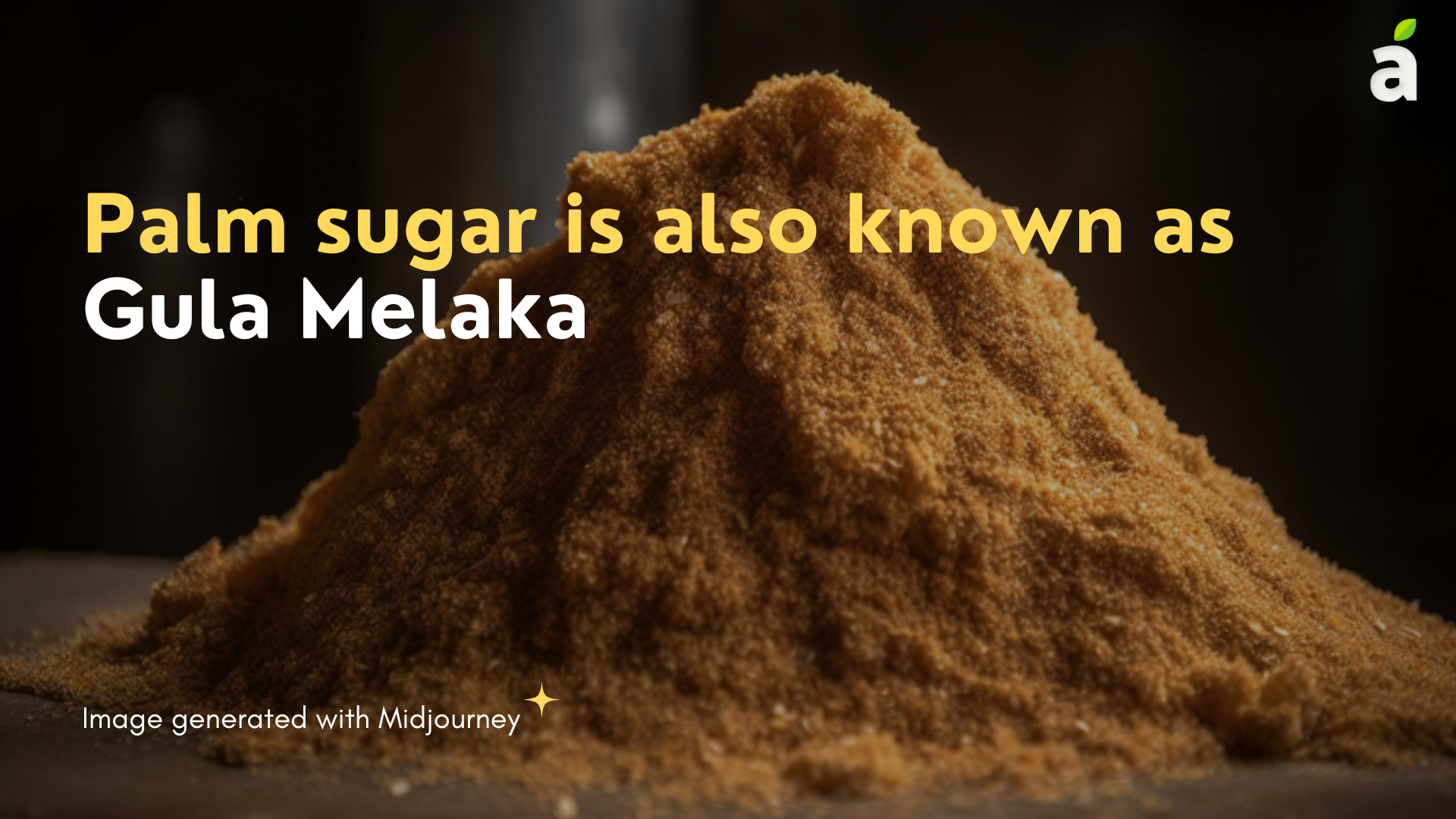
The Sweet Delight of Palm Sugar
By Naurin Ansari
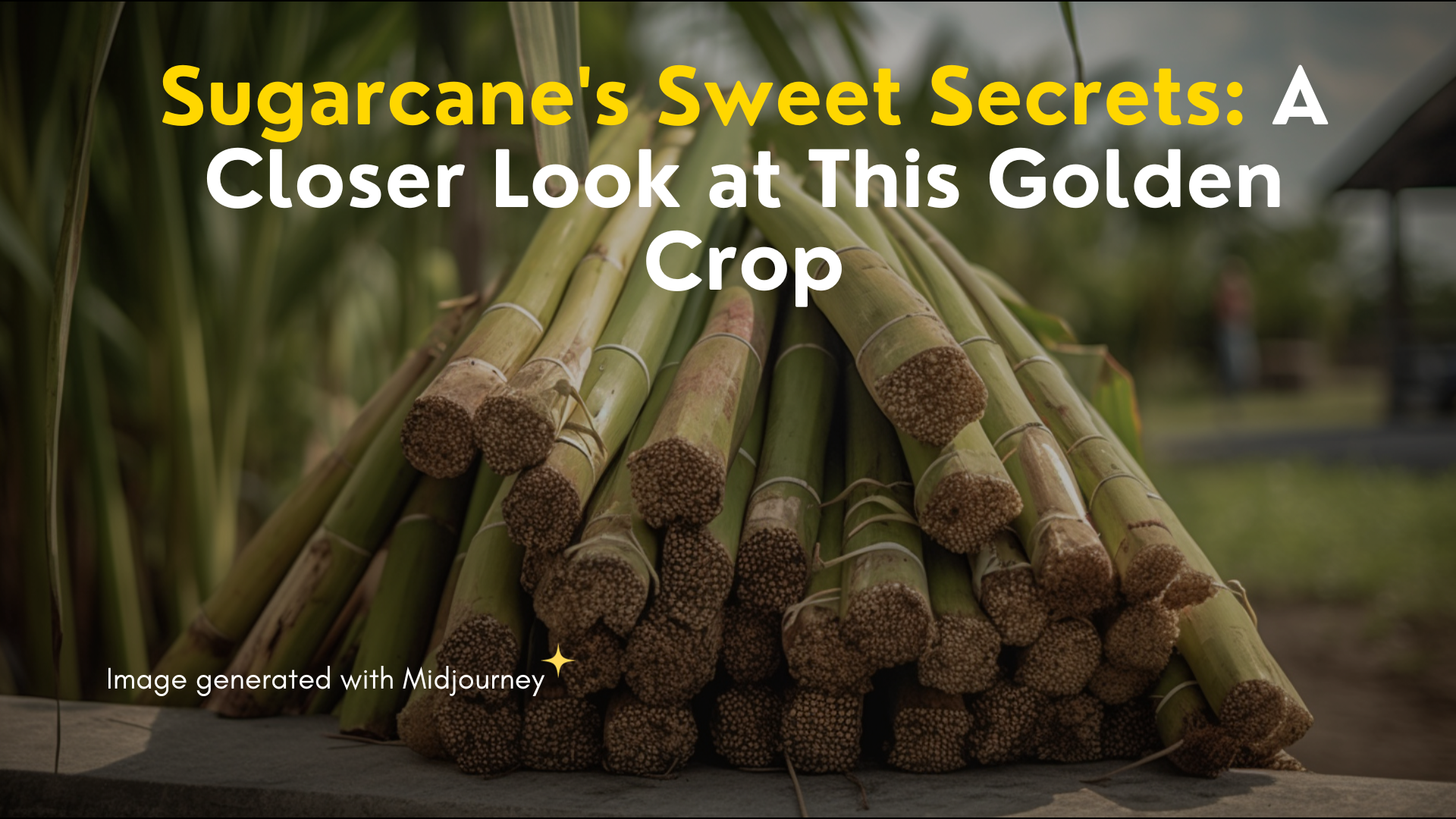
Unearthing the Sweet Secrets of Sugarcane
By Naurin Ansari
Choose Healthy With Us.
Know the real truth about your food. Stay informed and healthy, for free.

Download the App Now
Certified nutritionists trust our food recommendations. Safe to say, so can you :)




